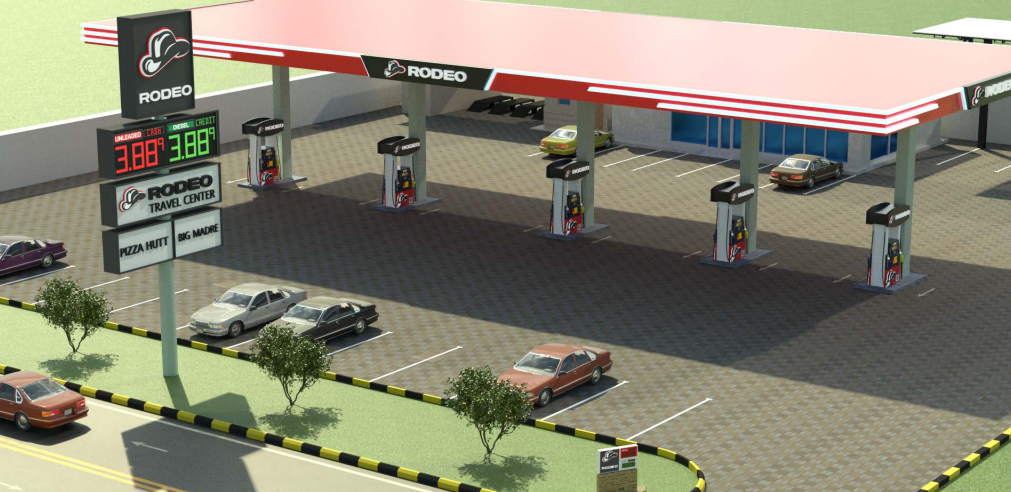Maximizing Returns Through Advanced Protective Coatings in Coastal Environments
Coastal fuel stations face unique challenges when it comes to protecting their infrastructure from harsh environmental conditions. The combination of salt spray, high humidity, and intense UV exposure can rapidly deteriorate surfaces, particularly affecting the fuel station sign and canopy structures. For operators seeking to maximize their return on investment while maintaining their facilities, choosing the right protective coating becomes crucial.
The coastal environment's aggressive nature means that standard protective measures often fall short, leading to frequent maintenance cycles and escalating costs. Understanding the specific demands of seaside locations and selecting appropriate protective solutions can significantly impact both immediate maintenance expenses and long-term financial returns.
Understanding Coastal Environmental Challenges
Salt Spray and Corrosion Impact
Coastal areas present a particularly challenging environment for fuel station sign installations and canopy structures. The constant exposure to salt-laden air accelerates corrosion processes, potentially reducing the lifespan of unprotected or inadequately protected surfaces by up to 50%. Salt particles can penetrate microscopic surface imperfections, initiating corrosion from within the material structure.
The combination of high humidity and salt creates an electrolytic environment that accelerates metal degradation. This is especially concerning for fuel station infrastructure, where safety and appearance are paramount considerations. Regular exposure to these conditions can lead to visible deterioration within months rather than years.
UV Radiation and Temperature Fluctuations
Intense ultraviolet radiation in coastal areas compounds the challenges faced by fuel station infrastructure. UV exposure can break down traditional protective coatings, leading to color fading, material brittleness, and reduced protective capabilities. Temperature variations between day and night create expansion and contraction cycles that stress coating systems and underlying materials.
These environmental factors particularly affect elevated structures such as the fuel station sign and canopy, which receive little natural protection from surrounding buildings or vegetation. The result is accelerated aging and increased maintenance requirements for unprotected or improperly protected surfaces.
Advanced Coating Technologies for Coastal Protection
Epoxy-Based Systems
Modern epoxy-based coating systems represent a significant advancement in protective technology for coastal fuel station infrastructure. These systems create an impermeable barrier against salt spray while maintaining excellent adhesion properties. The latest formulations incorporate advanced cross-linking technologies that enhance durability and chemical resistance.
When properly applied, epoxy-based coatings can protect fuel station sign structures and canopies for up to 15 years, even in aggressive coastal environments. This extended protection period significantly improves ROI by reducing maintenance frequency and associated costs.
Polyurethane Solutions
Polyurethane coatings offer superior UV resistance and color stability, making them particularly suitable for protecting visible fuel station infrastructure. These coatings maintain their protective properties and aesthetic appeal even under intense coastal sun exposure. Advanced polyurethane formulations provide excellent flexibility, allowing them to accommodate thermal expansion and contraction without cracking.
The latest generation of polyurethane coatings incorporates nano-technology particles that enhance their protective capabilities while maintaining clarity and gloss. This technology particularly benefits fuel station sign visibility and overall brand presentation.
Economic Analysis of Protective Coating Systems
Initial Investment Considerations
While premium protective coatings require higher initial investment, their long-term economic benefits often justify the expense. Quality coating systems for a typical fuel station sign and canopy installation may cost 30-40% more than standard options, but their extended service life and reduced maintenance requirements deliver superior ROI.
The initial application process, while more involved, ensures better adhesion and longer-lasting protection. This attention to preparation and application detail significantly influences the coating system's performance and longevity.
Long-term Cost Benefits
Advanced protective coatings typically deliver ROI within 2-3 years through reduced maintenance requirements and extended service life. This calculation considers both direct maintenance costs and indirect benefits such as improved customer perception and reduced operational disruptions.
When factoring in the full lifecycle costs, including maintenance, repairs, and eventual replacement, premium coating systems often result in 40-50% lower total ownership costs compared to standard solutions.
Implementation and Maintenance Strategies
Professional Application Techniques
Successful coating protection begins with proper surface preparation and professional application. Surface cleanliness, environmental conditions during application, and proper cure times significantly impact coating performance. Expert applicators use advanced techniques and equipment to ensure optimal coating thickness and uniformity.
Professional application services often provide warranties that further protect the investment in fuel station infrastructure. These guarantees typically cover both materials and workmanship, providing additional peace of mind for station operators.
Preventive Maintenance Protocols
Even the best protective coatings benefit from regular maintenance to maximize their service life. Implementing a scheduled inspection and maintenance program helps identify and address potential issues before they develop into significant problems. Simple maintenance procedures such as regular cleaning and prompt repair of minor damage can significantly extend coating life.
Modern maintenance protocols incorporate digital monitoring and documentation systems to track coating performance and predict maintenance needs. This proactive approach helps optimize maintenance scheduling and resource allocation.
Frequently Asked Questions
How long do protective coatings typically last in coastal environments?
Premium protective coatings specifically designed for coastal applications typically provide 10-15 years of effective protection when properly applied and maintained. This duration can vary based on specific environmental conditions and maintenance practices.
What factors most impact coating performance in coastal areas?
The primary factors affecting coating performance include salt spray intensity, UV exposure levels, temperature fluctuations, and maintenance practices. Professional application quality and proper surface preparation also significantly influence long-term performance.
How can fuel station operators maximize their coating investment?
Operators can maximize their investment by selecting appropriate coating systems, ensuring professional application, implementing regular maintenance protocols, and addressing any damage promptly. Working with experienced contractors and following manufacturer recommendations also helps optimize results.
What are the signs that a protective coating needs replacement?
Key indicators include visible corrosion, coating delamination, color fading, chalking, or surface cracking. Regular inspections can help identify these signs early, allowing for timely intervention before significant damage occurs.

